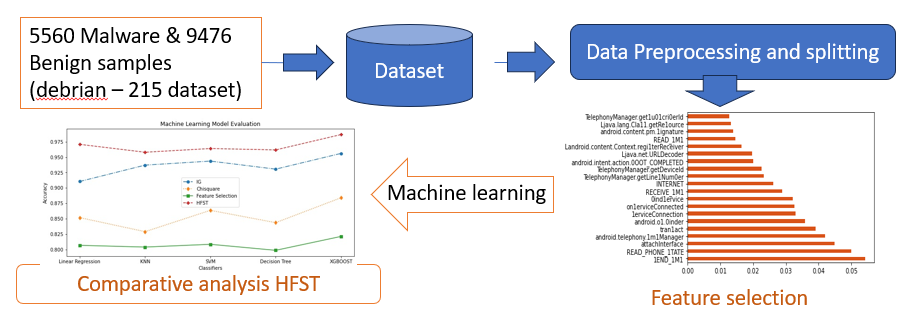Hybrid Feature Selection Technique to classify Malicious Applications using Machine Learning approach

Keywords:
Hybrid Features, Malware, Machine Learning, Performance EvaluationAbstract
The malware identification is crucial factor in secure uses of mobile phones. A method for malware classification utilizing hybrid features is described in this study. This method selects features using: information gain, chi-square, and feature importance techniques. This approach aims to check how feature selection affects the performance of a classifier. First, top 20 significant features are chosen using each technique, and performance of classifiers is assessed. At the end, all 60 features chosen using three techniques are combined, and features that are common to at least two techniques are selected as hybrid features. 11 out of 60 features were discovered to be hybrid features. Using these 11 hybrid features, the performance of classifiers like linear regression, SVM, KNN, decision trees, and XGBoost is re-examined. The outcome reveals that hybrid features improve the performance of all classifiers when compared to performance using individual features. Out of the five classifiers examined, XGBoost has achieved the highest accuracy (0.9866), precision (0.9900), recall (0.9833), and f measure (0.9866). Hybrid feature selection technique ultimately proved to be successful because the classifiers could distinguish between malicious and benign apps with a higher level of classification accuracy than they could with an individual feature selection strategy.
URN:NBN:sciencein.jist.2024.v12.702
Downloads
Downloads
Published
Issue
Section
URN
License
Copyright (c) 2023 Umesh Nikam, Vaishali M. Deshmukh

This work is licensed under a Creative Commons Attribution-NonCommercial-NoDerivatives 4.0 International License.
Rights and Permission



